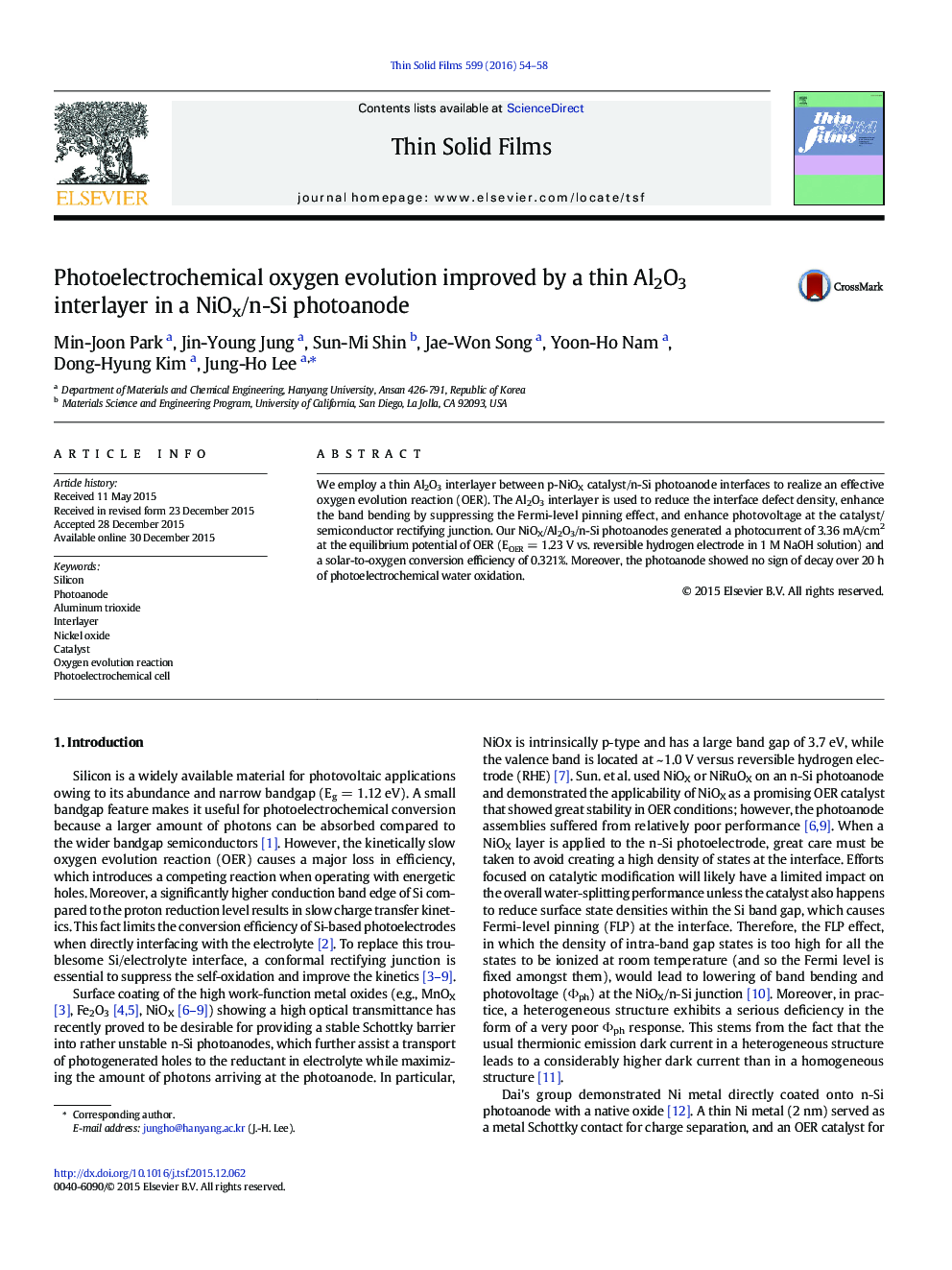| Article ID | Journal | Published Year | Pages | File Type |
|---|---|---|---|---|
| 1664308 | Thin Solid Films | 2016 | 5 Pages |
•A thin Al2O3 interlayer sandwiched between p-NiOX catalyst and n-Si photoanode.•Al2O3 interlayer decreases the interface defect states while increasing photovoltage.•NiOX/Al2O3/n-Si conversion efficiency of 0.321% maintained for 20 h without degradation.
We employ a thin Al2O3 interlayer between p-NiOX catalyst/n-Si photoanode interfaces to realize an effective oxygen evolution reaction (OER). The Al2O3 interlayer is used to reduce the interface defect density, enhance the band bending by suppressing the Fermi-level pinning effect, and enhance photovoltage at the catalyst/semiconductor rectifying junction. Our NiOX/Al2O3/n-Si photoanodes generated a photocurrent of 3.36 mA/cm2 at the equilibrium potential of OER (EOER = 1.23 V vs. reversible hydrogen electrode in 1 M NaOH solution) and a solar-to-oxygen conversion efficiency of 0.321%. Moreover, the photoanode showed no sign of decay over 20 h of photoelectrochemical water oxidation.
